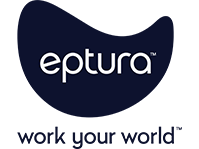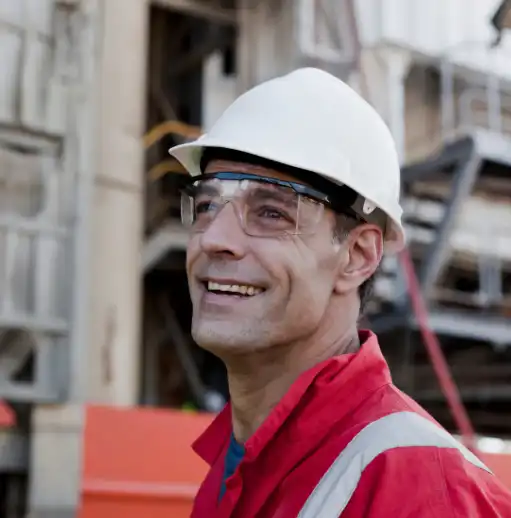In episode 371, host Mike Petrusky speaks with Pallavi Shrivastava, MRICS, LEED AP Principal and Global Head for Workplace Strategy at Arcadis where she is passionate about cultivating business intelligence, strategy and pushing growth for the world’s leading company delivering sustainable design, engineering, and consultancy solutions for natural and built assets. Mike asks Pallavi about her role as a workplace strategist navigating the hybrid work environment, understanding user needs, and finding the best solutions that align with an organization’s vision and the workforce’s preferences. They explore innovation in the workplace and how simplifying things for human beings, making the environment conducive to collaboration and creativity, is essential today. Pallavi believes there is a need for a holistic approach to workplace strategy, involving leaders, team members, and the broader workforce to gather deep insights and co-create solutions while she emphasizes the need for empathy and an open-minded, agile mindset when seeking to solve problems.
Agenda
- Explore current trends and challenges in workplace strategy
- Highlight the importance of human-centric design
- Discuss the role of workplace leaders in understanding and addressing the needs and emotions of the workforce
- Examine broader implications of how we think about space utilization across different asset classes
What you need to know: Workplace takeaways
Takeaway 1: Workplace innovation should prioritize human-centric design and emotional well-being over rigid, technology-first approaches
Pillavi emphasizes the importance of keeping human beings at the forefront of workplace design and strategy. “Workplace offices have such a deep impact on people,” she states. “And what motivates them, what brings them together to do great work, and all of these things I’ve just been kind of passionate about the last 7 or 8 years.”
She further elaborates on the concept of human-centric design, noting, “We have to talk about their emotions, you know. So, I think human centric design is something I think it’s picking up. People are realizing that we need to focus a lot more on what gets people motivated, what is the environment that’s going to get the best work done.”
Pillavi’s perspective highlights the need for workplace strategists to deeply understand and cater to the emotional and psychological needs of employees, rather than solely focusing on the physical and technological aspects of the office.
Takeaway 2: Workplace strategists must adopt an agile mindset and remain open to change in a rapidly evolving landscape
Pillavi underscores the significance of maintaining an agile mindset in the face of rapid changes in the workplace. “I think being empathetic and being more open minded and all of this if you keep yourself a little more agile mindset because things are changing quite fast and we are all trying to solve bigger problems and the same kind of we want to do better,” she explains.
This mindset is crucial for adapting to new technologies and trends, such as the ongoing debate around hybrid work environments.
She also touches on the importance of avoiding a fixed mindset, which can be detrimental in a dynamic environment. “Fixed mindset can be quite troublesome and can cause a lot of trouble in dealing with things,” she warns.
Her advice encourages workplace leaders to remain flexible and open to new ideas, ensuring they can effectively respond to the evolving needs of their workforce.
Takeaway 3: The role of workplace strategists involves balancing the perspectives of leaders and employees to create effective hybrid work environments.
Pillavi discusses the ongoing challenges of hybrid work and the need for workplace strategists to navigate the differing views of company leaders and their employees.
“We haven’t come to a common conclusion about hybrid work, so that kind of feel is still a big theme I see where we’re trying to figure out what’s the best hybrid work environment,” she observed. She notes that leaders often have a different vision for hybrid work compared to the workforce, and it is the role of the workplace strategist to find a balance.
“To engage at every level. And try to get as many insights about them in terms of how they work, what are they working on, what kind of things potentially are working for them, and what is sort of not working,” she says.
She advocates for a holistic approach, termed “triangulation,” which involves considering people, place, purpose, and technology together. “So, while you look at all of this combined together, you have to triangulate and kind of find the best viable solution or minimum viable solution as a solution for the workplace,” she explaines.
This approach ensures that the strategies implemented are well-rounded and cater to the diverse needs of all stakeholders.
Takeaway 4: The narrative around AI and job displacement should focus on repurposing and realigning roles rather than fear
Pillavi also addresses the common fear of AI displacing jobs, advocating for a more positive narrative. “Now I feel it’s a very cruel way of putting things. Isn’t it supposed to sort of help us and if this narrative is going around that AI is going to come and it’s going to take away all these jobs and OK, but it’s going to recreate these jobs for you’re going to get repurposed and doing probably doing things in a better way,” she says. She emphasizes the need to view AI as an enabler that can empower employees rather than a threat.
She also highlights the importance of empathy and compassion in this context. “Please, please have empathy and compassion in because a lot of times people are not able like I mean like we are talking about artificial intelligence taking people’s jobs away,” she states.
“Instead of telling people that they’re going to become useless and not productive to the society anymore, but they’re going to get realigned and repurposed and doing probably doing things in a better way.”
Her perspective encourages workplace leaders to communicate the benefits of AI and automation to their teams, fostering a culture of adaptation and growth.
Workplace management insights
- Workplace strategists must engage with users at every level, from leaders to the general workforce, to understand their needs and challenges.
- The approach to workplace design should be holistic, considering people, place, purpose, and technology, and should avoid overcomplicating solutions.
- Human-centric design is crucial for creating environments that motivate and support employees, encouraging them to return to the office and contribute meaningfully.
- Empathy and an agile mindset are essential for workplace leaders to adapt to rapid changes and solve complex problems.
- The narrative around AI and job displacement should focus on how technology can empower and realign people rather than render them obsolete.
Do a deep dive into more workplace insights by exploring all Workplace Innovator podcast episodes.









